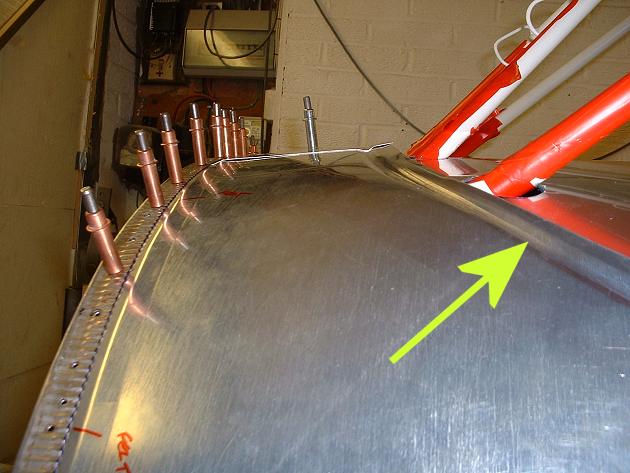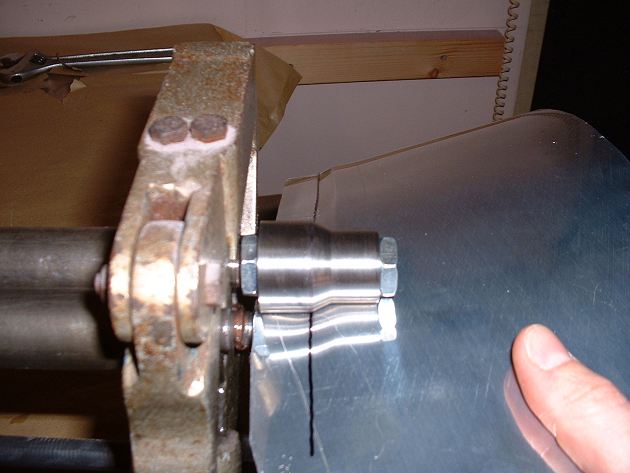OK guys for those who have done a restoration, my 46 tcraft has the aluminum floor boards and I was thinking of doing a black and silver marblization paint on them, applying a flat and then sticky back anti skid. The stuff I took off of them was thick and textured what do you guys suggest for finishing them up?
Announcement
Collapse
No announcement yet.
Restoration
Collapse
X
-
Re: Restoration
Ray,
Paint probably won't do it, it will eventually wear through. I would powder-coat them. It comes in so many different colors and even textures. Check it out, it will wear a lot longer.Cheers,
Marty
TF #596
1946 BC-12D N95258
Former owner of:
1946 BC-12D/N95275
1943 L-2B/N3113S
-
Re: Restoration
For my taste...the epoxy varnished marine plywood natural finish floorboards "pop". I receive many comments on them. LOL DocLast edited by Doc; 09-01-2011, 04:39.Doc TF #680
Assend Dragon Aviation
FAA Senior AME #20969
EAA TC #5453 / FA #1905
CAF Life Member #2782
NC43306 Feb/1946 BC12-D Deluxe
"Leben ohne Reue"
Comment
-
Re: Restoration
My 85hp Champ had: A black krinkle panel. The fellow who restored it tore eveything else out, leaving metal panels. Painted them all white, with white headliner. Seats were black, nicely done. Floor was marine plywood with several coats of poly, natural color. Metal kickplates at both rudder pedals for your heels. It was very sharp, good looking. Current BC12D has plywood floor with nice dark grey carpet. Metal kick plates over the carpet for rudder pedals. This looks good also, but I liked the Champ the best.JC
Comment
-
Re: Restoration
The wood floors were used on the earlier planes, sometime after the war they switched to metal. I don't like them as much. Noisy, cold and hard to get in and out. The wood ones are easier to work with, look good, are quieter, hold regular antique screw snaps well for carpet and I have the pattern for the stainless heel plates that go around the brake pedals if anyone has a bead roller and wants to make them (GOT to get one of those!). The wood boards are easy to make and if you tear one up, easy to replace. My IA considers them like "upholstery and interiors" which is OK for the owner to make and replace. They aren't primary structure, so you can even get away with a nice piece of furniture grade plywood. I used a couple of ORIGINAL 1939 ones a friend had to draw mine and the ply in those wasn't NEAR the quality we can get at "Home Aircraft Depot" now.
Need patterns?
Hank
By the way, the patterns won't fit your plane exactly, I have never seen two that were exactly alike. They were custom fit to each plane since the tubes never seem to be in the same places. I used the 39 ones to start and made cardboard and tape ones. The wood ones in my plane are the second wood set I made. I added tape to guide the second set cut lines. Check ALL OF YOUR CABLE RUNS THROUGH FULL CONTROL DEFLECTIONS before you put the finish on the wood and remember that the attach screws pull a bow into the boards. Use long screws to start that will pull the boards down. I made pilot screws for the final with the threads ground off the ends to make it easier to get the screws into the holes. Trim rings around the screws let them pull tight without damaging the wood.
Comment
-
Re: Restoration
A little bit of lathe work had me a set that fitted to the end of my slip rolls.Originally posted by Hank Jarrett View Post... a bead roller and wants to make them (GOT to get one of those!). .
I used them to do the bead work on my new boot cowl...

...unfortunately I don't have a photo of the dies used for that job, but I do of the "joggle" at the firewall juncture of the boot cowl, for which I made a different set of dies:

Both sets of dies were made in tool steel for hardness & polished.
(My slip rolls are seen here)...the dies screw on to the free ends on the left.
Comment
Comment